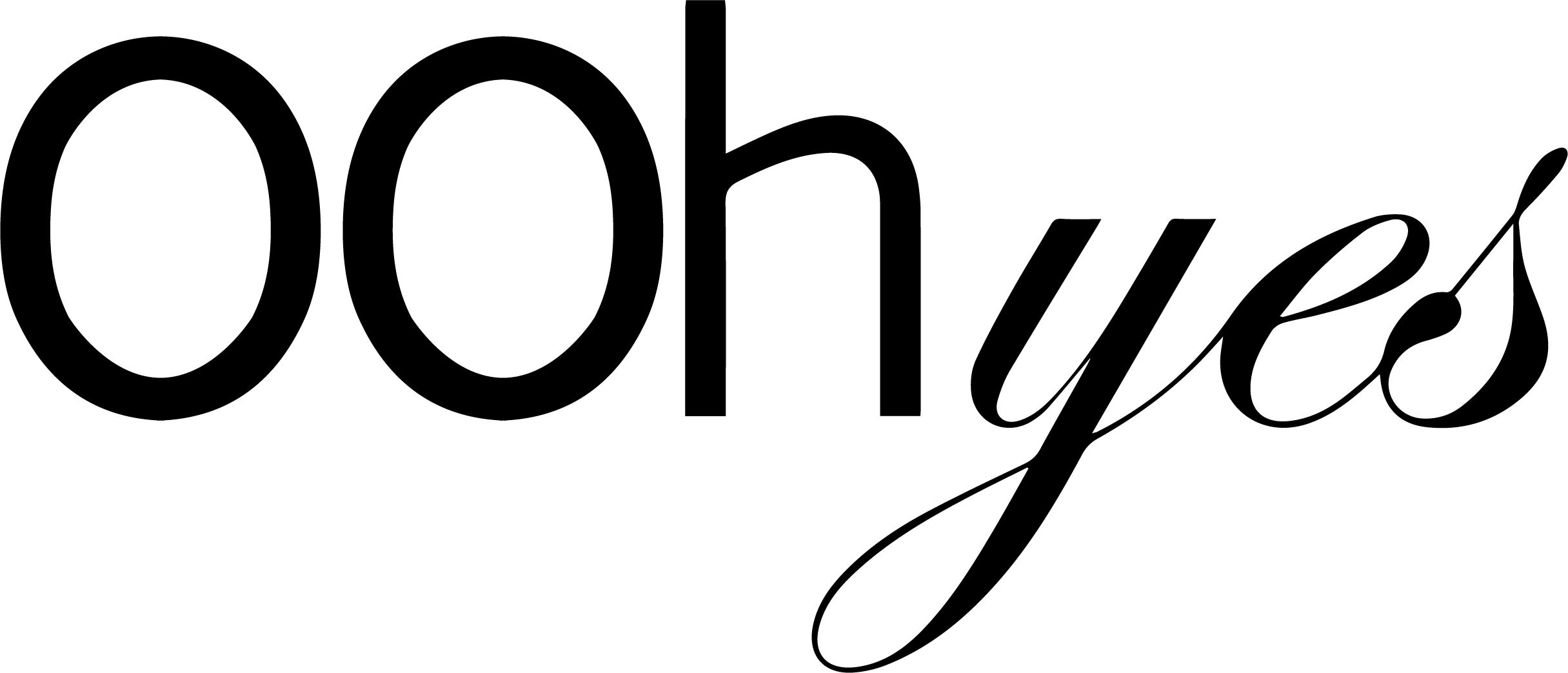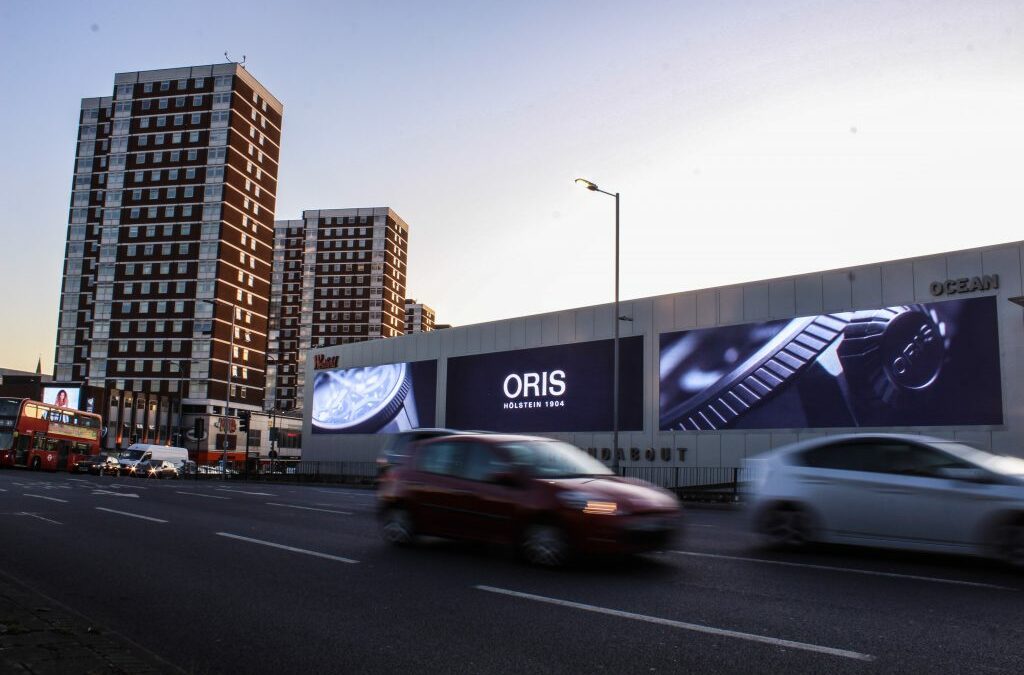Although set to have its strongest year on record, out-of-home was hit hard by the COVID-19 pandemic. Yet the strength of the medium has not wavered; in fact, its adaptability and capacity for show-stopping innovation are driving an unexpectedly quick recovery.
So, as the world begins to tentatively shake off its chains, it’s time to revisit the reasons why OOH was poised to enjoy its best year yet, and what sets the medium apart from other channels.
DOOH in the mainstream
As essential as classic OOH remains to the strength of the medium, digitisation has undoubtedly propelled its growth. The DOOH market offers unparalleled opportunities for creativity, flexibility and cross-channel strategy that haven’t existed before. Such advances have widened the scope for promoting brand awareness, offering a unique canvas that builds upon the potential of classic OOH. With a 52% increase in digital OOH screens across the UK over just one year (7,285 screens in 2018 to 11,024 in 2019), the rapid acceleration of DOOH is irrefutable.

Whilst maintaining relevancy by adapting to digital trends, DOOH has an edge by standing strong against many of the uncertainties faced by other digital and online channels. It separates itself from
online competitors by preserving its unique characteristics- trustworthy, non-selective, cost-effective and a mass reach medium (reaching 98% of the population per week). Resistant to ad blockers and imposters, OOH offers a brand safe environment which, unlike its digital competitors, is assured complete viewability- a promise no other digital channel can make!
Cost- efficiency
It’s true that the efficiency of digital means it does come for a premium cost. But no fear! Due to its tactical potential, the medium is equipped to cater to all budgets. Whilst classic OOH allows strategic placement of advertising only in locations that it is truly required, DOOH advances this by providing the opportunity to target specific times of day as well. Take a food brand, seeking to engage the hungry commuter on their way home from work. DOOH presents the opportunity for this brand to advertise only at PM commuter hours, tapping into the mind-set of the relevant audience, at the time it matters most.

This was a tactic utilised in a recent OOhyes campaign for People Per Hour, reaching a corporate audience by playing ads Monday-Friday at AM and PM commuter hours, on screens strategically placed outside of office spaces. And what about for a brand of ice cream? Even more clever, actually. The ads can appear only when the temperature is above 25 degrees!
As well as bringing costs down, timing and targeting works to improve the contextual relevancy of OOH; a relevancy responsive to the mood, mind-set and surroundings of the individual. A clear win-win.
In addition, new technological advancements are providing exciting possibilities for the cost-efficiency of digital OOH. OOhyes’ SafeWorld19 initiative throughout the pandemic (designed to spread positive messaging nationally) trialled software by Flow City, the latest technology using real-time impact data to determine cost. By recording the actual number of people passing the site, advertisers can be assured that they only pay for what they get, preventing any wastage in spend.
Dagmara Lacka, CEO & Co-Founder of Flow City notes that:
We are very pleased to be working with OOhyes, a new breed of specialist who embrace technological developments in the OOH arena, in order to deliver tailored and cost-effective campaigns for their clients. Flow City provided OOhyes with the opportunity to upload and optimize their SafeWorld19 campaign instantly, delivering real-time impacts. This model means that advertisers only pay for billboards when there is an audience in front of it. We look forward to working with OOhyes on many more campaigns to come.
Flexibility
Time-targeting presents just one level of flexibility unique to digital out-of-home. Additionally, it facilitates campaigns that can be started, stopped or edited at the drop of a hat- a fundamental requirement for brands in today’s frantic advertising landscape.

OOhyes embraced digital capabilities when forces out of our control almost cancelled a campaign for Ellesse just days before it was due to launch. The last-minute editing capacity of digital screens meant there was minimal impact to the campaign’s success. Most recently, our SafeWorld19 initiative wanted to thank Marcus Rashford for his free school meals victory. Knowing that Rashford would be playing his first game back at the Manchester United home ground, OOhyes turned around a campaign in one day, positioned opposite the ground on the Trafford Hotel to ensure his viewing.

Ultimately, the agility of digital is allowing OOH to be a last-minute medium of choice, as advertisers can activate the benefits of OOH at the same time as other digital channels. Content can be tweaked throughout the course of a campaign, in alignment with real-time events, unchained from the two week in-charge of classic OOH.
Building bridges
DOOH has revolutionised the role OOH plays in cross-channel strategy, building the bridge between online and offline. Engagement opportunities afforded by digital (take real-time social media feeds for example) generate fluidity between online content on outdoor screens. In addition, features such as augmented reality, interactivity and fully animated content serve as talking points when shared to the online sphere. The link between online and offline is well demonstrated by an award-winning OOhyes campaign for Brexit LedByDonkeys, which was entirely crowdfunded online. Additionally, the OOH campaign became the centre of Internet discussion, boosting a previously unknown grassroots movement into fame, with thousands of new followers.
By responding to chosen external variables, such as discount codes, stock levels (‘only 4 left!’) or weather-based advertising (an umbrella or holiday ad when it’s raining!), DOOH uses contextually relevant tactics to influence consumer behaviour, tapping into modern tendencies to research and purchase on mobile whilst out of the home. Recognising the ability of DOOH to serve as a point of sale has instilled the medium as a vital player in the multichannel mechanism.
So where next?
Of course, the power of live has not yet reached its full potential. It’s looking hopeful that as tech giants, SMEs and start-ups alike increasingly recognise the value in DOOH, opportunity for creativity, flexibility and cross-channel fluidity will accelerate even further. Naturally, this will also be driven by the ever-expanding digital landscape, to which DOOH will adapt accordingly. We’ve already seen a global first for the industry in OOhyes’ campaign for Electroneum; a campaign planned, bought and paid for in cryptocurrency. So, what’s next?
One thing’s for sure- OOH is evolving. For outdoor, the future looks undoubtedly digital.


Recent Comments